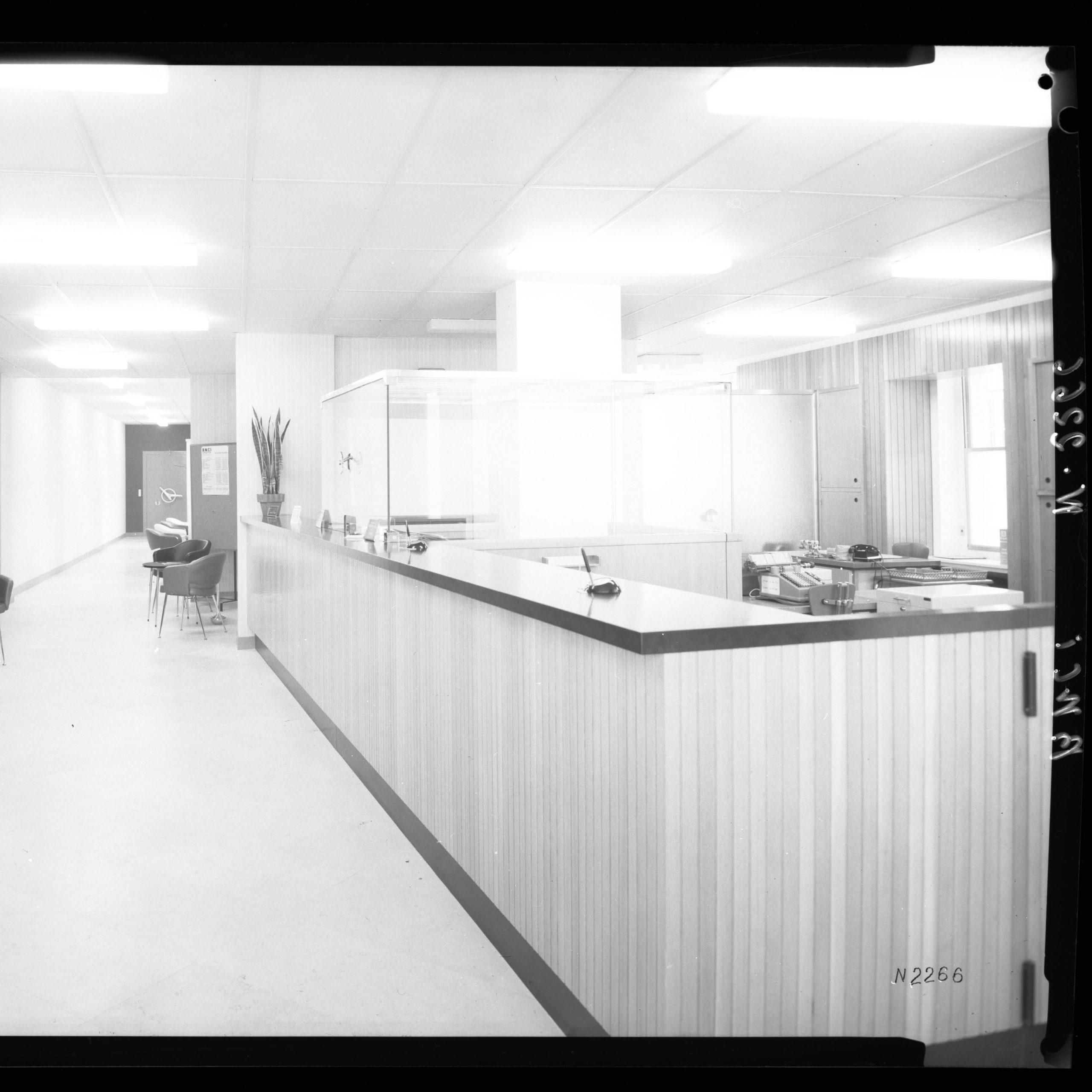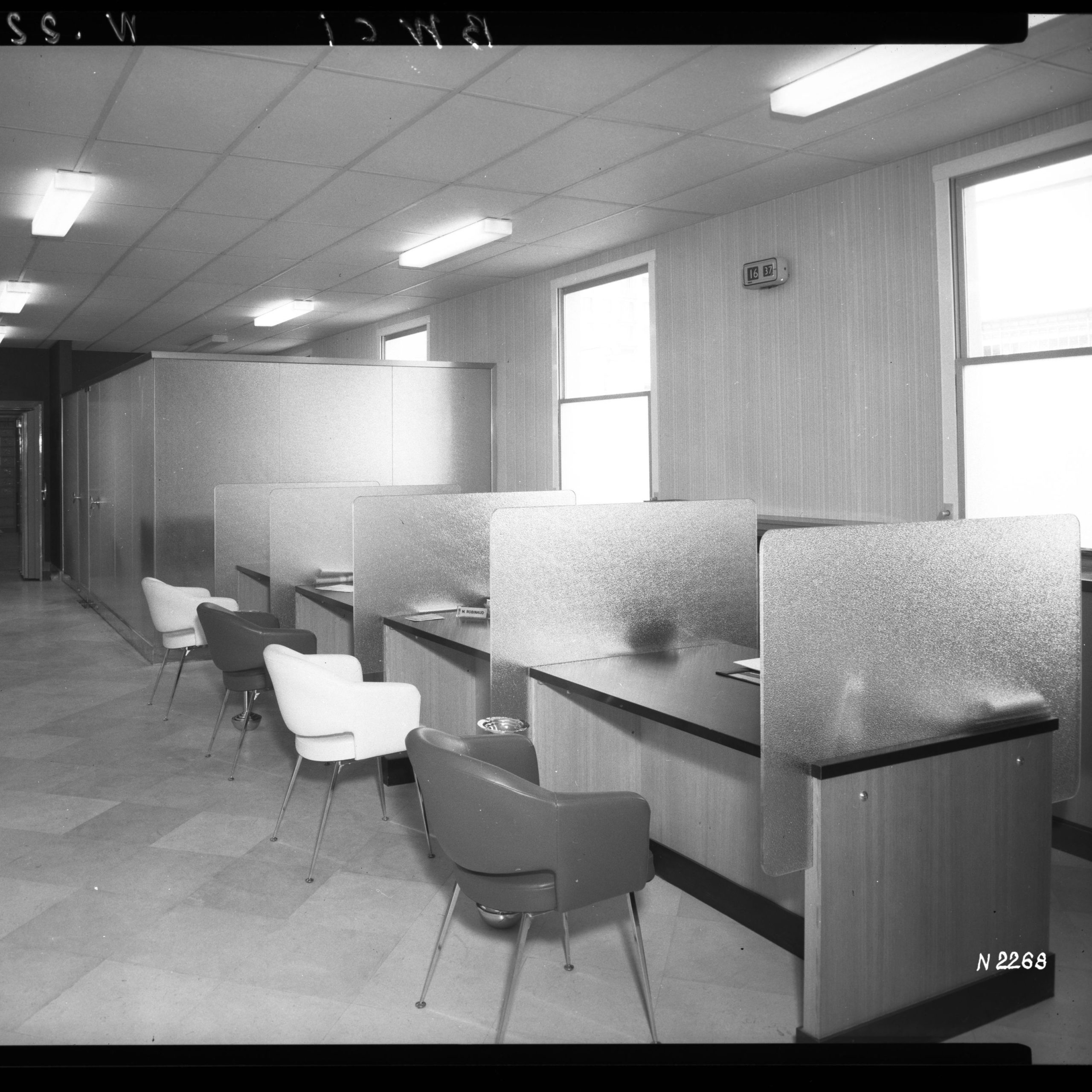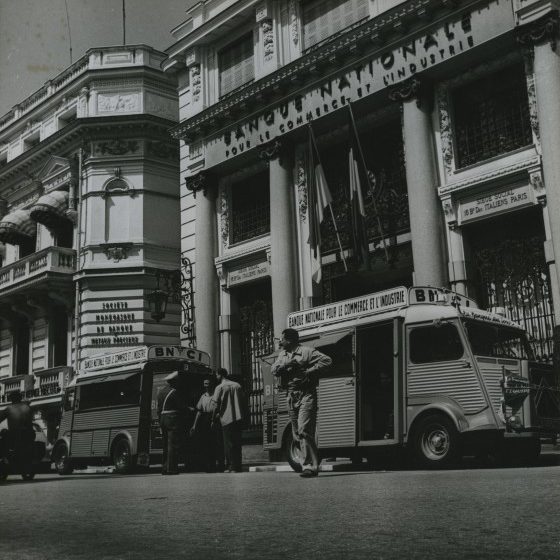The branch cash desk, a secured area, Banque Nationale pour le Commerce et l’Industrie in Bourg-La-Reine
This photo from 1965 shows the counter at the Banque Nationale pour le Commerce et l’Industrie (BNCI) branch in Bourg-La-Reine. The teller’s glass cage, totally enclosed, isolates the teller from the exterior. The contact with the public is through the talk-through baffle, this perforated and audio-enabled transparent sheet that lets the teller communicate with the public. A small horizontal slot at the bottom of the window also lets the counter clerk and customers exchange cash and cheques. If starting in the 1960s, the public reception is meant to be more friendly in the agencies, with more open areas and a physically delineated customer waiting area, the cash desk remains a sensitive area.
A changing network
Starting in the 60s, the Banque Nationale pour le Commerce et l’Industrie modernises its network. The objective? Always do a better job of meeting customer needs and to improve their comfort. This involves the total transformation of the interior decorations of agencies. Light coloured wall and floor coverings replace the wood, while neon lighting replaces the old brass lamps. The counters and grated dividers are replaced by offices. Likewise, the facades are changed to open large bay windows and let more light into the agencies. The BNCI sets out with determination to win new customers.
Moreover, between 1950 and 1965, the BNCI strengthened its presence in and around the capital. It went from 33 to 80 bank branches. This movement amplified starting in 1967 with the elimination of regulations concerning the opening of bank branches. This way the banks were able to open neighbourhood agencies in the major urban areas to support this new urbanisation.
Consequently, new agencies were opened in Antony, Chatenay-Malabry, Epinay-les-Cygne d’Enghien, Saint-Ouen, Villetaneuse and Créteil in the Paris suburbs and the Latin Quarter, Boulevard Exelmans and Cité des Arts in the Capital.
Photo of Studio Chevojon

Partager cette page










